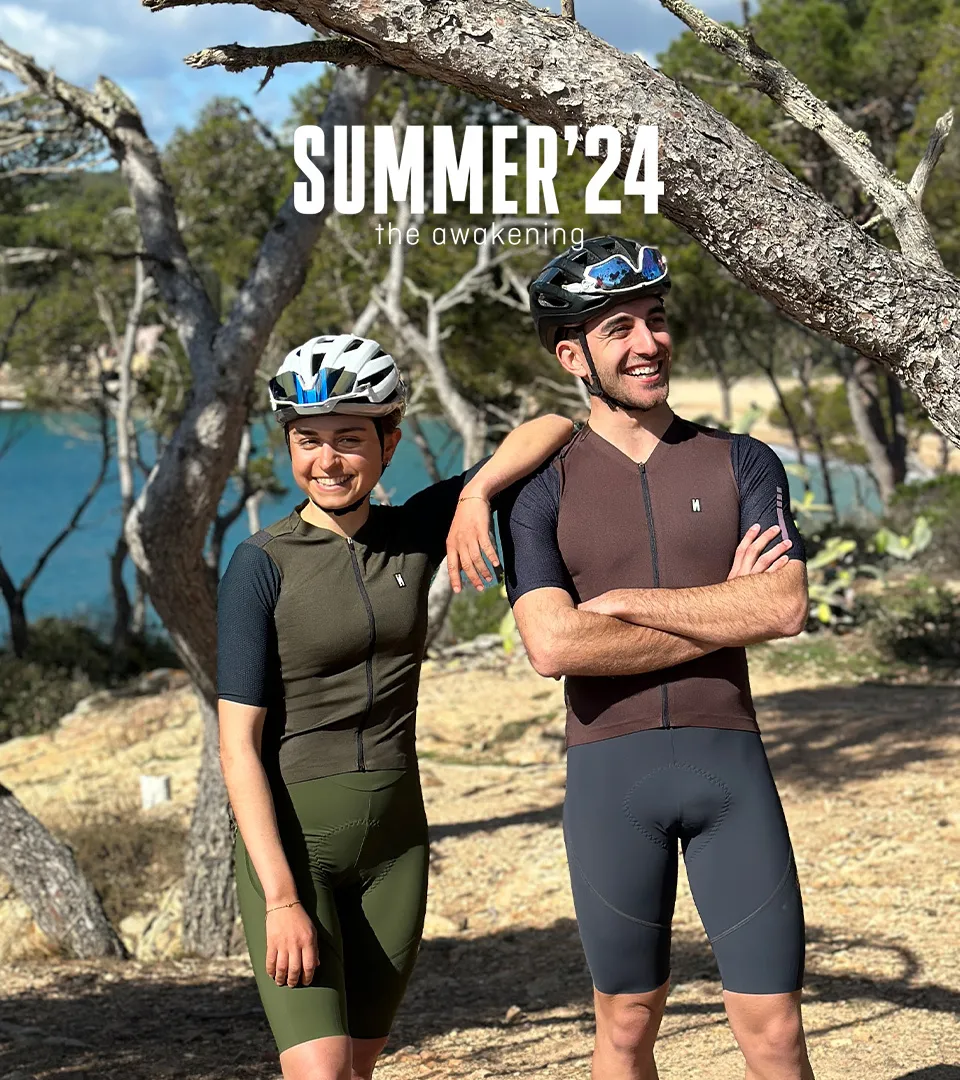10 TIPS FOR CHOOSING CYCLING WEAR FOR THE SUMMER

Summer’s here and we’re all looking forward to doing our favourite sport of cycling. Whether in the mountains, next to the beach, on the road, on cycling tours with friends or participating in a race, one thing is certain: we’re going to sweat – big time.
You may have the best bike in the world, the safest helmet, some wonderful sunglasses, but what can make the difference in terms of comfort and the feeling of coolness under the hot sun is the clothes you wear.
When choosing the ideal equipment, bear in mind how long you’re going to be doing physical exercise, the conditions on the ground where you’re going to do it, and the weather. The most important items are the cycling jersey and cycling bib shorts, although other garments can help you to ride more safely and comfortably.
At Inverse, we have extensive experience in manufacturing cycling wear since 1969, for both professional and amateur cyclists. That’s why we want to give you these 10 tips to help you choose your summer cycling wear:
1.- Avoid cotton garments
They get soaked with sweat, making the garments much heavier and without the proper breathability. Sweat-soaked clothing is very uncomfortable and unpleasant when it sticks to the body. And most importantly, you may dehydrate more quickly, affecting your performance.
2.- Breathable technical fabrics
Use cycling wear with high quality technical fabrics that are very breathable. At Inverse we use fabrics that wick away sweat quickly, such as Airtex and Cooltech. The quality of the fabric largely determines the comfort of the clothing and the price difference with cheaper garments of dubious quality. Good transpiration improves physical performance.
3.- Don’t buy fake branded garments
Don’t buy fake replicas of cycling wear. They usually use fabrics of very poor quality that are not breathable and cause skin allergies. Don’t trust anyone who offers you clothing that is the same but cheaper. In this case the saying that “you get what you pay for” is quite true.
4.- Rear pockets
In summer, it is essential to stay hydrated by drinking water or other isotonic drinks. It’s also good to keep your energy levels up with energy bars, nuts or some fruit. That’s why it’s a very good idea to have back pockets – with or without a zip – in your jersey to carry these items.

5.- Wear clothing that does not cause chafing
Use clothing with anti-abrasive fabrics and flat seams to prevent chafing by both the jersey and the bib shorts. There is nothing more irritating in summer than the combination of chafing and perspiration. The anatomical shape of the garment also helps prevent discomfort and cuts in the skin.
6.- Use jerseys with good fit at the waist
We highly recommend using jerseys with a hypoallergenic silicone rubber finish at the waist. It’s ideal for cyclists with sensitive skin and keeps the garment in its ideal position on the body. It also prevents the garment from slipping with other fabrics or with the skin itself.
7.- Full zip
It usually makes a jersey more expensive, but it’s worth it. Its main function is to provide a good fit. But in summer, its main function is that it can be opened as much as you want to increase breathability and coolness, and it helps you remove the garment quickly and comfortably.
8.- Lycra jersey sleeve
Not essential, but recommended. The sleeve, made entirely of Lycra, ensures that the piece fits the anatomy of the arm completely, which is always welcome. It provides more comfort and is more aerodynamic than traditional sleeves with tight bands. The characteristics of the fabric also help improve muscle recovery.
9.- Use short gloves
Short cycling gloves like those by Inverse are ideal for the summer, because the palms are reinforced with non-slip silicone and gel zones. The combination of these two areas prevents the hand from slipping and protects the palm properly. In the outside area it also has the perfect fabric for drying sweat.

10.- Bib shorts are the cyclist’s most important garment
A cyclist spends a lot of time on the bike, and much of the difference between pedalling comfortably or uncomfortably comes down to having good bib shorts with a good chamois pad. The chamois pad protects the rider at all times and there are various models depending on the type of cycling, the type of saddle, the rider’s weight and time you are going to spend in the saddle. A good chamois pad must also be highly breathable, hypoallergenic and adaptable to the male and female anatomy.





